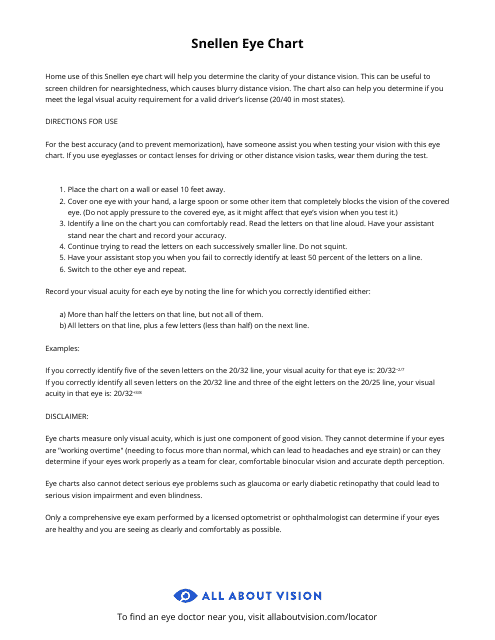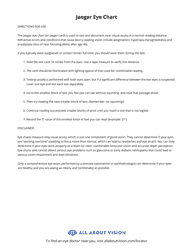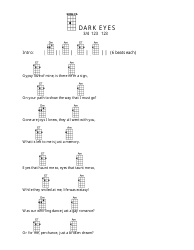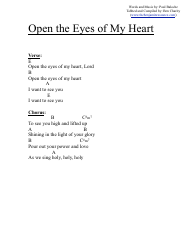Snellen Eye Chart
The Snellen Eye Chart is a tool used by eye care professionals to measure visual acuity, which refers to the clarity or sharpness of one's vision. It is named after the Dutch ophthalmologist Herman Snellen who developed the chart in 1862. The chart features several rows of letters, with the top row usually consisting of one large letter. As you move down the chart, the letters become smaller, testing the limit of a person's vision. Typically, the Snellen Eye Chart is used in an eye examination to determine whether a person needs corrective lenses or glasses to improve their vision.
The Snellen Eye Chart is not a document that is typically filed by any individual or organization. It's a tool used by optometrists and other eye care professionals around the world, including in the USA, Canada, India, and Australia, to measure visual acuity, i.e., how well a person sees at various distances. It was named after Dutch ophthalmologist Herman Snellen who developed the chart in 1862.
FAQ
Q: What is a Snellen Eye Chart?
A: The Snellen Eye Chart is a tool used by eye care professionals and others to measure visual acuity. It was developed by a Dutch ophthalmologist named Herman Snellen in 1862.
Q: How does the Snellen Eye Chart work?
A: The eye chart is placed at a standard distance of 20 feet and the patient is asked to read out the smallest line of text they can see. Each line corresponds to a certain level of visual acuity.
Q: What does 20/20 vision mean on the Snellen Eye Chart?
A: 20/20 vision is considered 'normal' visual acuity. This means that the test subject can read a line of text from 20 feet away that an average person should be able to read from 20 feet.
Q: What if I can't read the 20/20 line on the Snellen Eye Chart?
A: If you can't read the 20/20 line, it doesn’t necessarily mean you have a vision problem. However, you should consult an eye care professional for a comprehensive eye examination.
Q: Are there alternatives to the Snellen Eye Chart?
A: Yes, other types of eye charts include the LogMAR chart and the Tumbling E chart. Each has its own advantages and disadvantages compared to the Snellen Eye Chart.
Q: Is the Snellen Eye Chart used worldwide?
A: Although the Snellen Eye Chart originated in the Netherlands, it is used by eye care professionals worldwide.
Q: Can the Snellen Eye chart detect color blindness?
A: No, the Snellen Eye Chart is specifically designed to measure visual acuity. Color blindness is typically assessed with a different type of test, such as the Ishihara color test.







